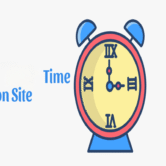
Define recurring billing and subscription models in payment integration
Introduction
Recurring billing and subscription models have revolutionized how businesses manage revenue streams and how customers pay for services. As digital commerce grows and consumers increasingly seek convenience and flexibility, subscription-based services supported by recurring billing systems have become prevalent across industries—from SaaS platforms to streaming services, fitness memberships, meal delivery kits, and more. At the heart of these models lies seamless payment integration, allowing for automation, reliability, and an enhanced customer experience. This article delves deep into the mechanisms, benefits, and implementation of recurring billing and subscription models within modern payment systems, illustrating their importance in sustaining long-term business growth.
Understanding Recurring Billing
Recurring billing is an automated process where a business charges a customer’s payment method at regular intervals—monthly, quarterly, annually, or custom-defined—without requiring manual input from the customer each time. It is commonly used in services where continuous access or delivery is provided. This billing method relies on secure storage of payment credentials and is facilitated through robust payment gateways. Recurring billing reduces administrative overhead, ensures consistent cash flow, and improves customer retention by minimizing friction in the payment process.
Exploring Subscription Models
A subscription model is a business strategy where customers pay a recurring price at regular intervals to gain access to a product or service. These models offer predictable revenue and long-term customer relationships. Subscriptions can be tiered (offering different levels of service), usage-based, or fixed-rate. Businesses can customize these models to suit customer preferences, encouraging loyalty and reducing churn. Subscription models are widely seen in digital platforms like Netflix and Spotify, SaaS tools like Adobe Creative Cloud, and even physical goods like subscription boxes.
Types of Subscription Billing Models
There are several types of subscription billing models:
- Flat-Rate Billing: A single, unchanging price for a consistent set of services.
- Tiered Billing: Different pricing levels based on features, user counts, or consumption.
- Usage-Based Billing: Charges vary depending on the level of use (common in cloud services).
- Hybrid Billing: Combines flat-rate and usage-based pricing for flexibility.
Each model serves a unique customer need and business objective, and the right choice depends on the product nature and target audience.
Role of Payment Integration in Recurring Billing
Payment integration connects the business’s software platform with payment processors, enabling automatic and secure transactions. For recurring billing, integration ensures that customer data is stored securely, payments are scheduled and processed reliably, and failed payments are managed through retry logic or dunning processes. Payment gateways such as Stripe, PayPal, and Square offer APIs that simplify recurring billing integration, offering support for invoicing, tax calculation, and compliance features. A strong integration can make or break the user experience and efficiency of a subscription business.
Advantages for Businesses
Recurring billing and subscription models provide several advantages to businesses:
- Predictable Revenue: Helps with forecasting and financial planning.
- Customer Retention: Long-term relationships reduce the need for constant new customer acquisition.
- Operational Efficiency: Automation reduces manual tasks and human errors.
- Scalability: Easy to grow services without proportional increase in overhead.
These models offer businesses the stability and agility needed to innovate and compete in fast-evolving markets.
Benefits for Customers
From a customer’s perspective, recurring billing and subscriptions offer convenience and flexibility. There’s no need to remember payment dates, and services can be paused or modified easily. Customers enjoy uninterrupted access to the products or services they value, often at a lower upfront cost. Subscriptions also allow users to experience services on a trial basis or upgrade as their needs evolve, which enhances customer satisfaction and loyalty.
Security and Compliance Considerations
Handling recurring payments involves sensitive financial data, making security and compliance paramount. Businesses must comply with PCI DSS (Payment Card Industry Data Security Standard) requirements to securely store and process payment data. Tokenization, encryption, and secure vaults are used to protect information. Additionally, compliance with regional regulations like GDPR or PSD2 is crucial. A well-integrated payment system ensures both security and compliance, reducing risk and building customer trust.
Challenges in Implementation
Despite the benefits, implementing a recurring billing system has its challenges. These include handling failed payments, updating expired payment methods, managing subscription changes, and dealing with chargebacks or disputes. Subscription churn can also hurt business growth. It’s essential to use smart billing software that includes features like automated reminders, retry logic for failed payments, user dashboards for subscription management, and analytics for insight into customer behavior.
Analytics and Optimization
Recurring billing systems generate valuable data that can be used to understand customer behavior and optimize offerings. Businesses can track metrics such as Monthly Recurring Revenue (MRR), churn rate, Customer Lifetime Value (CLTV), and average revenue per user (ARPU). These insights enable strategic decision-making, targeted marketing, and personalized user experiences. Optimization efforts may include tweaking pricing models, bundling services, or offering incentives for long-term commitments.
Future Trends in Subscription Billing
The future of recurring billing is poised to be more intelligent and customer-centric. With advancements in AI and machine learning, billing systems will become more predictive—automatically adjusting billing cycles based on usage patterns or customer preferences. Dynamic pricing, micro-subscriptions, and even crypto payments are emerging trends. As consumer expectations continue to evolve, the flexibility and adaptability of subscription platforms will determine their long-term success.
Conclusion
Recurring billing and subscription models are essential pillars of the modern digital economy. When paired with robust payment integration, they provide a seamless, secure, and scalable solution for businesses and customers alike. These models not only simplify financial management and user engagement but also foster long-term relationships, predictable growth, and business innovation. As technology continues to evolve, embracing intelligent billing solutions will be key to maintaining competitive advantage and ensuring customer satisfaction in a subscription-driven world.
Hashtags
#RecurringBilling #SubscriptionModels #PaymentIntegration #DigitalCommerce #SaaSBusiness #PredictableRevenue #CustomerRetention #FlatRateBilling #UsageBasedPricing #TieredSubscription #HybridBilling #PaymentGateways #SecureTransactions #PCICompliance #SubscriptionSuccess #CustomerExperience #BillingAutomation #RevenueGrowth #BusinessScalability #OnlinePayments #FintechInnovation #DataSecurity #SubscriptionEconomy #DigitalPayments #FlexibleBilling #IntegratedPayments





